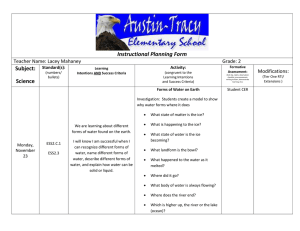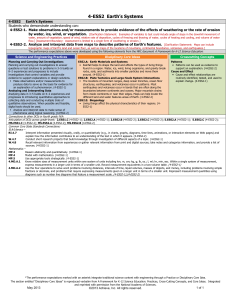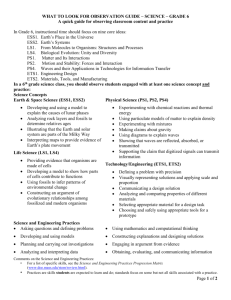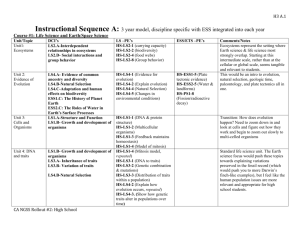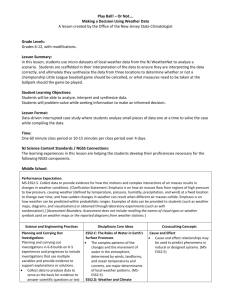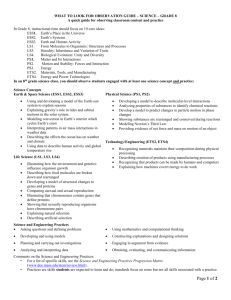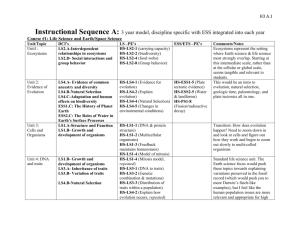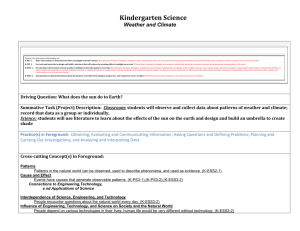Instructional Planning Form
advertisement
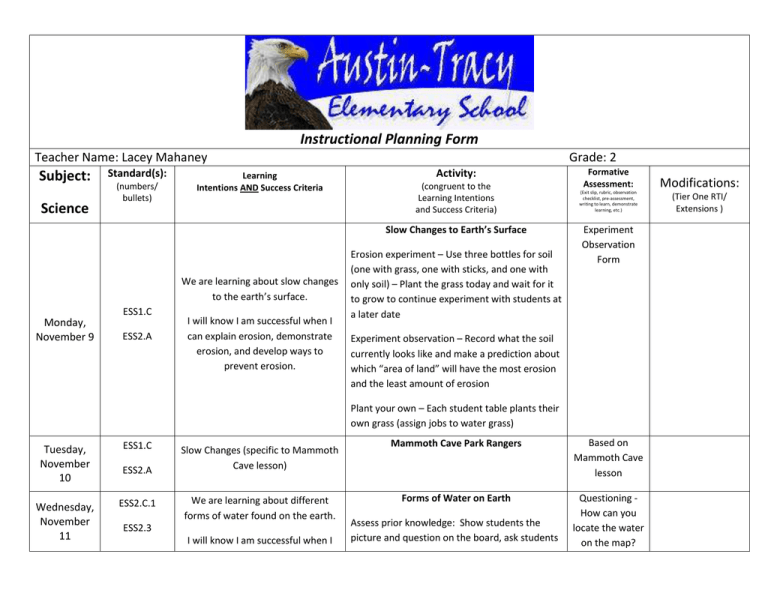
Instructional Planning Form Teacher Name: Lacey Mahaney Subject: Science Standard(s): (numbers/ bullets) Learning Intentions AND Success Criteria Grade: 2 Activity: (congruent to the Learning Intentions and Success Criteria) Slow Changes to Earth’s Surface We are learning about slow changes to the earth’s surface. Monday, November 9 ESS1.C ESS2.A I will know I am successful when I can explain erosion, demonstrate erosion, and develop ways to prevent erosion. Erosion experiment – Use three bottles for soil (one with grass, one with sticks, and one with only soil) – Plant the grass today and wait for it to grow to continue experiment with students at a later date Formative Assessment: (Exit slip, rubric, observation checklist, pre-assessment, writing to learn, demonstrate learning, etc.) Experiment Observation Form Experiment observation – Record what the soil currently looks like and make a prediction about which “area of land” will have the most erosion and the least amount of erosion Plant your own – Each student table plants their own grass (assign jobs to water grass) Tuesday, November 10 Wednesday, November 11 ESS1.C ESS2.A ESS2.C.1 Slow Changes (specific to Mammoth Cave lesson) We are learning about different forms of water found on the earth. ESS2.3 I will know I am successful when I Mammoth Cave Park Rangers Based on Mammoth Cave lesson Forms of Water on Earth Questioning How can you locate the water on the map? Assess prior knowledge: Show students the picture and question on the board, ask students Modifications: (Tier One RTI/ Extensions ) can recognize different forms of water, name different forms of water, describe different forms of water, and explain how water can be solid or liquid. to think about where the water in the ocean and the water in the rivers comes from, give students time to share their opinions with their partner, and as a whole group, have students explain their thoughts and reasoning Hook: Show students the chosen map and ask them to locate the water found there. We are learning about different forms of water found on the earth. Thursday, November 12 ESS2.C.1 ESS2.3 ESS2.C.1 ESS2.3 Bodies of water flipbook – Create flipbook by folding paper and gluing label cards inside and outside of the flaps I will know I am successful when I can recognize different forms of Introduce – Lake, river, ocean, pond, waterfall, water, name different forms of and gulf water, describe different forms of water, and explain how water can be solid or liquid. We are learning about different forms of water found on the earth. Friday, November 13 Forms of Water on Earth I will know I am successful when I can recognize different forms of water, name different forms of water, describe different forms of water, and explain how water can be solid or liquid. Forms of Water on Earth Bodies of water flipbook – Read about an ocean and a gulf, show pictures from the internet, make connections to prior knowledge, record definition, and draw an illustration to represent each form of water What shape is the water? What names do we give these different bodies of water? Can you find any frozen water, or ice, on the map? Exit Slip – List as many forms of water as possible Flipbook
